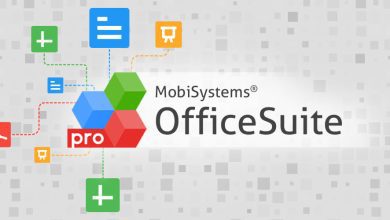Medical billing and coding – Spread Fun & Happiness
Medical billing and coding is the process of translating medical services and procedures into standardized codes used by insurance companies and other payers to reimburse healthcare providers. It is a complex and ever-changing field, but it is essential to the financial health of healthcare organizations.
Medical billing and coding professionals typically have two main responsibilities:
- Medical coding: Medical coders use their knowledge of medical terminology and classification systems to assign the correct codes to patient records and claims. This includes codes for diagnoses, procedures, medications, and other services provided.
- Medical billing: Medical billers prepare and submit claims to insurance companies and other payers. They also track the status of claims and resolve any issues that may arise.
Medical billing and coding professionals play a vital role in ensuring that healthcare providers are reimbursed accurately and efficiently for the services they provide. They also help to ensure that patients receive the coverage they are entitled to under their insurance plans.
The importance of medical billing and coding
Medical billing and coding is important for a number of reasons. First, it helps to ensure that healthcare providers are reimbursed accurately and efficiently for the services they provide. This is essential for the financial health of healthcare organizations. Second, medical billing and coding helps to ensure that patients receive the coverage they are entitled to under their insurance plans. Third, medical billing and coding data is used by healthcare payers and policymakers to make informed decisions about coverage and reimbursement.
How to become a medical biller and coder
There are a number of ways to become a medical biller and coder. One option is to complete a formal training program. There are many accredited programs available, both online and in person. Another option is to learn on the job by working as an apprentice under a more experienced medical biller or coder.
Regardless of how you choose to train, it is important to stay up-to-date on the latest medical coding and billing regulations. The healthcare industry is constantly changing, so it is important to have the most current knowledge and skills.
Career outlook for medical billers and coders
The job outlook for medical billers and coders is very good. The Bureau of Labor Statistics projects that employment of medical billers and coders will grow 15 percent from 2020 to 2030, much faster than the average for all occupations. This growth is expected to be driven by the aging population and the increasing demand for healthcare services.
Salaries for medical billers and coders
The median annual salary for medical billers and coders in 2021 was $43,620. The highest-paid 10 percent earned more than $78,680, while the lowest-paid 10 percent earned less than $30,570. Salaries can vary depending on experience, education, and location.
Medical Coding: Medical coding involves translating healthcare services, procedures, diagnoses, and equipment into universal alphanumeric codes. These codes are used for billing purposes, insurance claims, and statistical analysis. The two main coding systems are:
- ICD-10 (International Classification of Diseases, 10th Edition): This system is used to code diagnoses and reasons for patient encounters.
- CPT (Current Procedural Terminology): CPT codes are used to describe medical, surgical, and diagnostic services and procedures.
Accurate coding is vital for proper reimbursement and adherence to regulatory requirements. Certified medical coders are trained to review medical records and assign the appropriate codes.
Medical Billing: Medical billing is the process of submitting and following up on claims with health insurance companies to receive payment for services provided by healthcare providers. It involves:
- Claim Submission: After the medical coder assigns the appropriate codes, a biller submits claims to insurance companies.
- Claim Adjudication: Insurance companies review claims for accuracy and compliance with their policies. They determine the amount payable and issue payments or denials.
- Payment Posting: Once the claim is approved, the payment is recorded, and any remaining balance is billed to the patient.
- Follow-Up: Billers may follow up on unpaid or denied claims, resolving any issues and resubmitting claims if necessary.
Importance of Medical Billing and Coding:
- Revenue Generation: Accurate coding and efficient billing processes ensure that healthcare providers receive proper reimbursement for services rendered.
- Compliance: Adherence to coding regulations and billing standards is crucial for compliance with healthcare laws and regulations.
- Data Analysis: Coded information is used for research, healthcare planning, and policy development.
- Patient Care: Proper coding and billing contribute to the financial health of healthcare organizations, allowing them to provide quality patient care.
Conclusion
Medical billing and coding is a growing field with good job prospects and salaries. If you are interested in a career in healthcare, medical billing and coding is a great option to consider.
Certification programs are available for both medical coding (e.g., Certified Professional Coder – CPC) and medical billing (e.g., Certified Professional Biller – CPB), ensuring that professionals in these roles have the necessary skills and knowledge.



